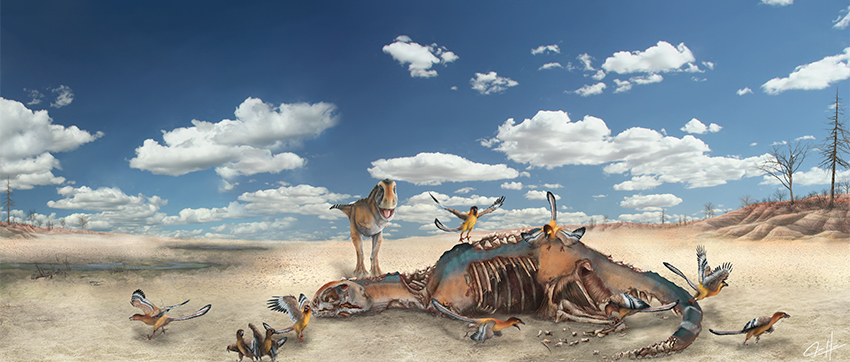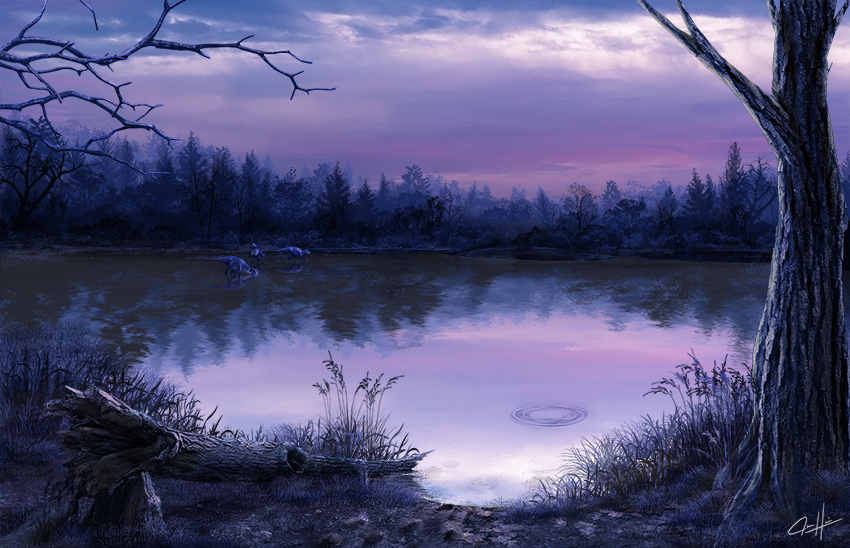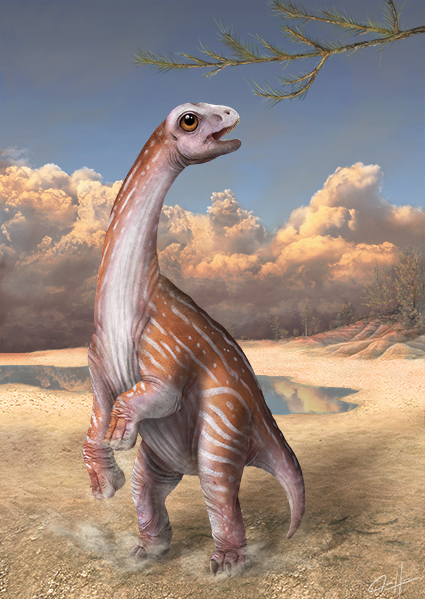Current Exhibit
Contact
Smail GalleryOlin-Rice Science Center, First Floor
Raising the Dead
Bringing Fossil Ecosystems to Life



Raising the Dead: Bringing Fossil Ecosystems to Life is the result of a multi-year collaboration between Macalester faculty members Kristi Curry Rogers (Biology and Geology) and Ray Rogers (Geology) and artist and Macalester alum Jordan Mae Harris. The spark for these pieces came out of Kristi’s Dinosaurs (GEOL 101) course in which Jordan created a digital art piece for their final project. This piece inspired Ray and Kristi when they were considering funding a paleoartist to help them bring their visions of fossil worlds to life.
Jordan strives to render real the intersection of imagination and science. Their illustrations serve as “prehistoric polaroids” in which the focus is on the singular paths of long-dead creatures’ lives within their ecosystem contexts. Jordan zooms in on things like the texture of an organism’s skin, on movement during the thrill of the hunt, or on the tiny wounds that pinpoint the end of a long famine to bring these extinct animals to life.
Ray Rogers is a geologist whose research focuses on sedimentology and stratigraphy – the sciences of putting rocks in order, interpreting the ancient environments in which they were formed, and determining the ages of fossil-bearing rocks. He also studies taphonomy – the science of death and burial – essentially, working toward an understanding of the post-death, pre-burial events that allow skeletons to make it into the fossil record.
Kristi Curry Rogers is a paleobiologist whose research focuses on long necked dinosaurs known as sauropods. Her work on this group led to naming two new dinosaur genera, Rapetosaurus and Vabiny, from Madagascar. She also works on bone histology, the science of studying the microscopic structure of bone in fossil and living animals – the tiny signatures preserved in bones serve as an archive of life history and allow Kristi to interpret things like growth rates, environmental stress, and age, even in long-extinct dinosaurs..